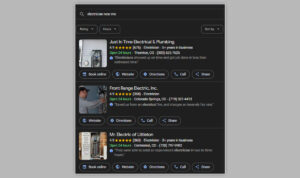Here, you’ll learn the 10 steps to optimize your affiliate blog for monetization.
Monetizing an affiliate blog can be a great way to earn passive income, but it requires some strategic planning and effort.
Whether you’re new to blogging or looking to improve your existing blog, these steps will help you optimize and turn your blog into a profitable venture.

-
Table of Contents
Key Takeaways
1. Know Your Target Audience
2. Create High-Value Content
3. Find Good Affiliate Offers
4. Create Your Money Pages
5. Include Strategic Calls-to-Action
Sidebar
In Content
After Entry
Menu
Homepage
Lead Forms
6. Avoid Giving People Too Many Choices
7. Test, Track, and Tweak to Increase Conversions
8. Optimize for Mobile
9. Build a Loyal Community
10. Get Social
Conclusion
Frequently Asked Questions
What is the first step to optimize my affiliate blog?
How can I create high-value content?
What are good affiliate offers?
What are money pages?
What is a call-to-action (CTA)?
Why should I avoid giving too many choices?
How can I optimize my blog for mobile?
How do I build a loyal community?
Key Takeaways
-
Understand who your readers are and what they need to create content that resonates with them.
-
Produce high-quality content that offers real value to your audience, making them more likely to engage and convert.
-
Choose affiliate offers that align well with your blog’s niche and audience interests.
-
Design specific money pages that focus on converting visitors into customers.
-
Use clear and compelling calls-to-action to guide your readers toward making a purchase.
1. Know Your Target Audience
Understanding your target audience is the foundation of a successful affiliate blog. Knowing who your readers are helps you create content that resonates with them and drives conversions.
Here are some simple ways to get to know your audience better:
-
Ask Relevant Questions: Run surveys on your site or ask questions when engaging with your audience. tools and plugins can make this easy.
-
Observe Visitor Behavior: Use tools like Google Analytics, HotJar, or Crazy Egg to analyze how visitors interact with your site. This can provide valuable insights into what they like and dislike.
-
Learn from Discussions: Visit niche-specific forums or Facebook groups where your audience hangs out. Pay attention to the comments on your site as well.
-
Reviews and Purchase Activity: Look at the most popular products your audience buys and read customer reviews. This can give you a good idea of their preferences and needs.
On the FractalMax blog, right now, I focus on affiliate marketing. The goal is to establish topical authority.

My target audience is:
People Who Want to Start an Affiliate Business
These are individuals who are new to the affiliate marketing industry.
They might be interested in:
-
Learning the basics
-
Finding the right niche
-
Done-for-you systems
-
Understanding how to set up their first affiliate Hub or website.
and more.
They’re looking for beginner-friendly guidance, tools, and resources that can help them get started quickly and effectively.
If you’re struggling with traffic generation, the Mass Traffic Blueprint course is for you! The course is free, you just have to join the FractalMax private community (for free!).

Affiliates Who Want to Level Up Their Existing Business
This group includes more experienced affiliates who already have an established business but are looking to take it to the next level.
They are interested in advanced strategies, such as scaling their traffic, optimizing conversions, diversifying income streams, and exploring new niches or platforms.
They may also be seeking ways to automate their processes, improve their SEO, or leverage paid advertising to boost their affiliate earnings.

Secure your spot for the free training to learn how you can launch your own real deal affiliate business in 7 days or less.
2. Create High-Value Content
Creating high-value content is crucial for the success of your affiliate blog. High-quality content attracts more visitors and builds trust and credibility with your audience.
Here are 3 tips to help you create content that stands out:
-
Unique Content: Ensure your content is original and not duplicated from other sources. This helps in gaining better rankings on search engines.
-
Useful Content: Your content should be easy to read and provide valuable information that addresses your audience’s needs.
-
Relevant Content: Use relevant keywords and links to make your content more discoverable and useful to your readers. You can also use Google auto complete.

When you focus on these aspects, you can drive more traffic to your affiliate links and improve your conversion rates.
This approach not only helps in getting more organic traffic but also in building a loyal reader base who trust your recommendations.

3. Find Good Affiliate Offers
Finding the right affiliate offers is crucial for the success of your affiliate blog.
You want to promote high-quality and relevant offers that resonate with your audience.
Here are some steps to help you find the best affiliate offers:
-
Research Affiliate Programs: Look for reputable affiliate programs that offer products or services related to your niche. Some popular programs include Amazon Associates, ClickBank, and ShareASale.
-
Evaluate the Products: Make sure the products you choose to promote are of high quality and have good reviews. Promoting low-quality products can harm your reputation and trust with your audience.
-
Check Commission Rates: Different affiliate programs offer different commission rates. Compare the rates and choose programs that offer competitive commissions.
-
Consider the Audience Fit: Ensure the products you promote align with the interests and needs of your audience. Promoting irrelevant products can lead to lower conversions and loss of trust.
-
Test and Track Performance: Once you start promoting affiliate offers, track their performance. Use analytics tools to see which products are performing well and which ones are not. This will help you optimize your strategy.

4. Create Your Money Pages
Your “money page” is the main page where people land to make you money. Your goal is to get as many people as possible to visit these pages.
The type of pages you use and how you market them will depend on your niche, product, and overall strategy.
Here are some common types of money pages you can create:
-
Squeeze Page: Also known as a capture or landing page, this page is designed to collect email addresses. You can offer a freebie in exchange for their email, which you can later use for marketing.
-
Product Review Page: This page acts as a snapshot of your top-rated products with pros and cons, pricing, and other details. You can include an affiliate link to the sales page and a link to your detailed review for those not ready to buy yet.
-
Resources Page: A simple page that lists the tools you use and recommend. People love to know what you use to achieve your goals, so this can be a simple way to make extra bucks promoting useful, relevant products.
-
Quiz Funnel: This is a more advanced setup where you create a quiz that segments your audience into relevant groups. They land on the right money pages and enter the right email lists. This is engaging for the user since most people love a good quiz!

5. Include Strategic Calls-to-Action
Your goal is to make use of each and every element of your blog to lead people towards your primary goal – making a sale.
The best way to do this is with a relevant Call-to-Action (CTA). There really are many ways to go about this so there’s no “one size fits all” approach.
But these are some of the most common places to include a CTA on a blog to give you some food for thought.
Sidebar
I’m sure you are familiar with a sidebar.
If not (and if you happen to be using a desktop) look to your right when visiting sites! This is probably the most common place to include a CTA but worth using all the same.
You could use a banner to gain subscribers, directly send to a sales page, or warm people up first by linking to your money page.
In Content
There are tools and plugins that allow you to insert banners, text or buttons pretty much anywhere within the content.
I don’t recommend going nuts about this so as not to hinder the user experience, or detract from your content. If tactfully and strategically executed, this can be highly effective.
Even a sentence or two at the end of a post with a link to your money page can work surprisingly well.

After Entry
Some themes allow you to include an image with a link after every post or page. This is another way to encourage people to visit your money pages.
Menu
Create a simple menu structure that is useful, but that also serves your purpose. Include a direct link to your optin page, for example.
You could also link to content that (while useful in itself) is designed to funnel different segments of your audience into your optin page who may not have otherwise done so.
Don’t forget: Every link in your menu should have a well-defined purpose.
Homepage
Depending on the design of your blog, it can be useful to have a simple front page that clearly leads your audience towards your money page.
If you use a homepage, it should very clearly lead people to your money pages.
Lead Forms
With the use of a plugin, by inserting code or by integrating your autoresponder, you can include a variety of optin forms throughout your blog.
For example, you could display a “ribbon” optin form at the bottom of a post, a “slide in” form from the side of the content, or a popup that appears as the user is about to exit the page.
There are many good tools you can use. A good plugin will also allow you to split test creatives and even test other form types against one another, along with precise targeting options.
6. Avoid Giving People Too Many Choices
When it comes to optimizing your affiliate blog, less is often more. Giving your visitors too many choices can overwhelm them and lead to decision fatigue.
This can result in lower conversion rates and reduced revenue.
To keep things simple and effective, follow these tips:
-
Limit Options: Only present the most important choices to your visitors. This helps guide them towards taking the desired action.
-
Clear Navigation: Ensure your blog’s layout is straightforward. Important pages should be no more than one click away.
-
Purposeful Links: Every link on your blog should have a clear purpose. Avoid unnecessary distractions.

By streamlining your blog and reducing clutter, you make it easier for visitors to find what they need and take action. This simple strategy can lead to higher engagement and better monetization outcomes.
7. Test, Track, and Tweak to Increase Conversions
No matter how much research you do, the best way to learn is by actually doing. When you test something, you will make mistakes, but you will also gain valuable insights to improve your results.
The idea is to learn as much as you can and then use that data to make better decisions.
Here are some steps to help you test, track, and tweak your blog for better conversions:
-
Set Clear Goals: Know what you want to achieve. Is it more clicks, sign-ups, or sales?
-
Use Analytics Tools: Tools like Google Analytics and Facebook Insights can provide you with a wealth of data about your visitors.
-
A/B Testing: Test different versions of your pages to see which one performs better. Change one element at a time, like the headline or call-to-action.
-
Track Key Metrics: Keep an eye on important metrics like bounce rate, time on page, and conversion rate.
-
Make Data-Driven Decisions: Use the data you collect to make informed changes to your blog.

By following these steps, you can continually improve your blog and increase your conversions.
8. Optimize for Mobile
In today’s world, more people are browsing the internet on their phones than on desktops.
Optimizing your blog for mobile users is no longer optional; it’s a must. Here are some steps to make sure your blog is mobile-friendly:
-
Responsive Design: Ensure your blog’s design adapts to different screen sizes. This means your site should look good and be easy to navigate whether someone is on a phone, tablet, or desktop.
-
Fast Loading Times: Mobile users are often on the go and won’t wait for a slow site. Compress images, use a good hosting service, and minimize code to speed up your site.
-
Mobile-Friendly Links: Make sure all links and buttons are easy to click on a small screen. Avoid placing links too close together.
-
Voice Search Optimization: With the rise of voice assistants, optimizing for voice search can help you reach more mobile users. Use natural language and long-tail keywords.
-
Test on Multiple Devices: Regularly check how your blog looks and functions on different devices. This helps you catch any issues that might turn visitors away.

By following these steps, you’ll provide a better experience for your mobile visitors, which can lead to higher engagement and more conversions.
9. Build a Loyal Community
Building a loyal community around your blog is essential for long-term success.
A dedicated audience will keep coming back and engage with your content, which can lead to higher conversions and more revenue.
Here are some strategies to help you build a loyal community:
-
Be Consistent: Regularly publish high-quality content to keep your readers engaged and coming back for more.
-
Engage with Your Audience: Respond to comments, emails, and social media messages. Show your readers that you value their input.
-
Create a Sense of Belonging: Use forums, social media groups, or community sections on your blog to foster interaction among your readers.
-
Offer Value: Provide useful and relevant content that addresses your audience’s needs and interests.
-
Be Transparent: Be open about your goals and how you plan to achieve them. Transparency builds trust.

By focusing on these strategies, you can create a strong, engaged community that supports your blog and helps it grow.
10. Get Social
Leveraging social media platforms is crucial for increasing your blog’s revenue. Social media platforms have become a powerful force in the digital space.
Here are some ways to make the most out of them:
-
Influencer Marketing: Collaborate with influencers who have a significant presence on social media. Their endorsement can bring more traffic to your blog.
-
Sponsored Posts: Brands often pay bloggers to write about their products or services. Share these posts on your social media to increase visibility.
-
Affiliate Marketing: Promote products or services on your blog and share yourarticles on social media to maximize earnings.
Advertising on social media is another great strategy. Most platforms offer advertising options that can help increase your blog’s visibility.

Here are some popular options:
Want start your affiliate business or take an existing one to the next level? Visit our website to learn more and secure your spot for our free training today!
Conclusion
Optimizing your affiliate blog for monetization is a journey that requires patience, creativity, and a bit of strategy.
The steps outlined in this article, can help you turn your passion for blogging into a profitable venture.
The key is to understand your audience, create valuable content, and choose the right monetization methods that align with your blog’s niche.
Always keep experimenting, learning, and adapting to find what works best for you. Happy blogging and here’s to your success!
Thanks for reading,
Laurence
Frequently Asked Questions
What is the first step to optimize my affiliate blog?
The first step is to know your target audience. Understanding who your readers are helps you create content that meets their needs and interests.
How can I create high-value content?
High-value content is informative, engaging, and relevant to your audience. Research your topics well and provide useful information that solves problems or answers questions your readers might have.
What are good affiliate offers?
Good affiliate offers are those that align with your blog’s niche and audience. Choose products or services that you believe in and that your readers would find valuable.
What are money pages?
Money pages are specific pages on your blog designed to drive conversions. These can be product reviews, comparison pages, or landing pages that include affiliate links.
What is a call-to-action (CTA)?
A call-to-action is a prompt that encourages your readers to take a specific action, like clicking a link, signing up for a newsletter, or making a purchase. Effective CTAs are clear and compelling.
Why should I avoid giving too many choices?
Too many choices can overwhelm your readers and lead to decision paralysis. It’s better to offer a few well-curated options to guide them towards making a decision.
How can I optimize my blog for mobile?
To optimize your blog for mobile, ensure that your website is responsive and loads quickly on mobile devices. Use a mobile-friendly design and test your site on different devices to ensure a good user experience.
How do I build a loyal community?
Building a loyal community involves engaging with your readers regularly, responding to comments, and providing valuable content consistently. Encourage interaction and make your readers feel valued.
Source: fractalmax.agency



